Who
Joe VanderKelen, President of SMI Snow Makers
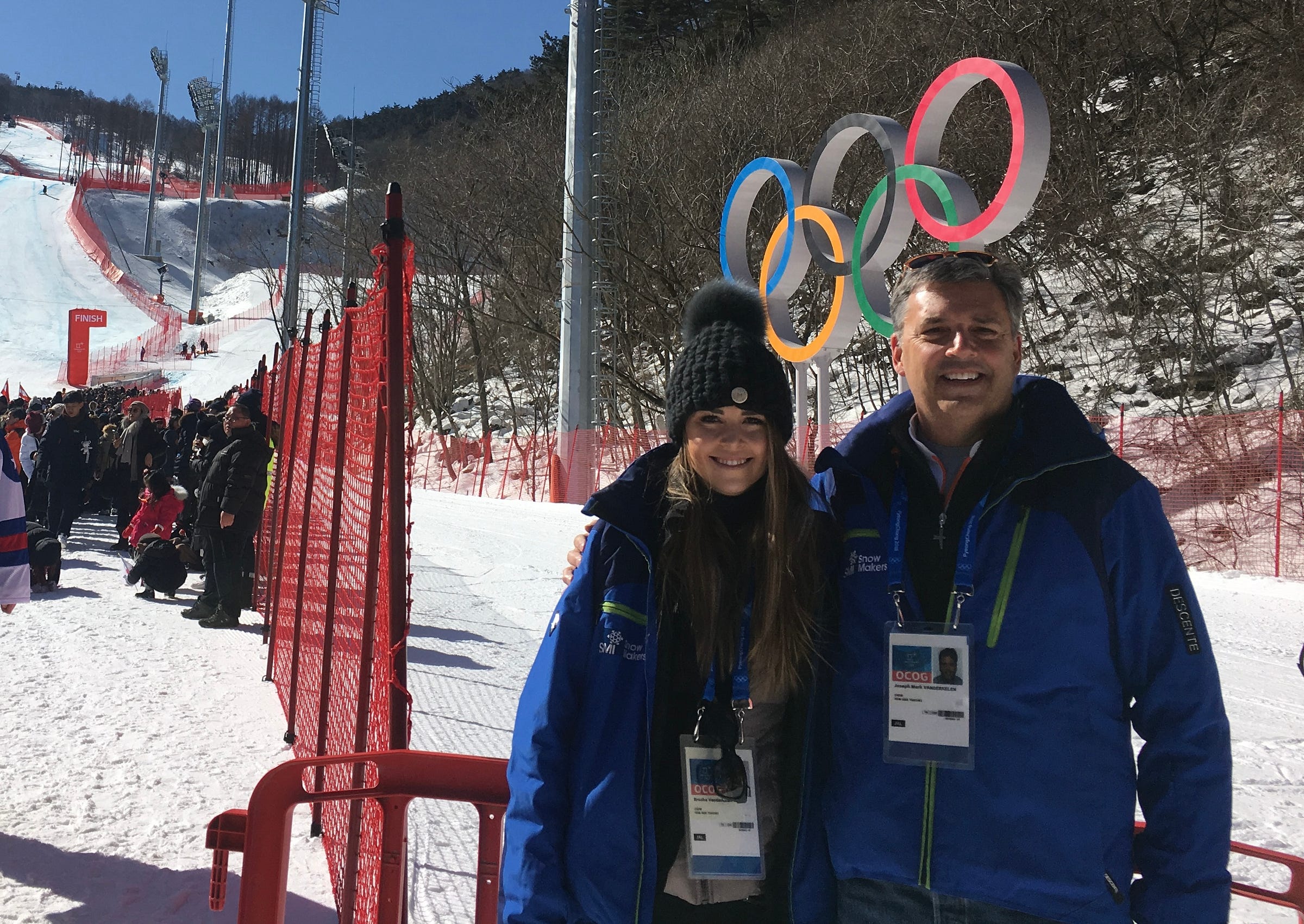
Recorded on
November 28, 2022
About SMI Snow Makers
SMI is the largest U.S.-based snowmaking manufacturer, and one of the biggest such outfits in the world. Their guns sit at more than 1,000 facilities – mostly, but not exclusively, ski areas – all over the world. The company is based in Midland, Michigan, a place so flat that, if you turned it on its side, you’d roll forever and then simply tumble off the edge of the planet. An odd-seeming locale, perhaps, for a snowmaking manufacturer, until you’ve spent a winter there on those windy, frozen plains.
SMI is not what we’d call a “consumer-facing brand,” but you’ll see their product markings - V2, Axis, Grizzly, FreedomX, Puma, PoleCat, Wizzard - as you ski around. Super Puma is the one I seem to see most often, a stocky cannon with adjustable footings, perched hill-wise like a medieval defense. SMI’s various guns have served eight Olympic venues, a point of immense pride for what is still a family-run operation. Joe’s parents founded the company back in the ‘70s. He’s been running it since 1991. You can learn more about them here:
If you’re ever driving US 10 through central Michigan, you can’t miss the SMI factory and HQ, seated off the freeway just past the junction with Business 10 as you head west:
Why I interviewed him
A few weeks back, I wrote about the heroic efforts of ski areas throughout the Midwest, Mid-Atlantic, and Northeast to open in November in spite of abnormally warm early-season weather. After nodding to the usual aggressive corporate-owned badasses such as Sunday River and Killington, I called out some of the smaller operations that cracked open around the same time:
More impressive, however, was New York State-owned Belleayre, seated just over two hours north of New York City, which opened the same day as Sugarloaf, beating most of New England to launch. Sister resort Gore also opened that day. Whiteface went live the following day, delivering its first-ever opening on the mountain’s full 3,166-foot vertical drop. Vail Resorts’ Hunter Mountain opened that day as well. Windham, five miles away (as the crow flies), opened Monday, Nov. 21. Further south, Bousquet, Massachusetts; Wisp, Maryland; and Massanutten, Virginia opened Nov. 25. In never-snowy Indiana, Perfect North opened Nov. 22, the mountain’s third-earliest opening in its 43-season history.
These sudden openings were not, I continued, spontaneous:
These ski areas are not anomalies. They did not get lucky. Their rapid openings under marginal conditions across vast and varied geographic regions are the direct result of yearslong investments in better and more efficient snowmaking. They are the best-case present, yes, showcases of the most technologically advanced snowmaking equipment. But they also represent the future. One in which ski area operators are not passive victims of climate change, but active combatants against it, making more snow than ever in spite of less-than-ideal conditions, and doing so with equipment that uses a fraction of the energy of previous generations of snowmaking machinery.
Much of that machinery comes from SMI, including nearly the entire system at Perfect North:
Perhaps the most improbable get-open-and-stay-open outfit in the country is Perfect North. The ski area’s base sits at just 400 feet. Of the 108 operating Midwest ski areas, only two sit farther south (Vail-owned Paoli Peaks, Indiana and Hidden Valley, Missouri). And yet, the ski area opened on just four partial days of snowmaking, which Perfect North General Manager Jonathan Davis characterized as “two mediocre nights, one fantastic night, and one good night.” Despite having just six additional snowmaking windows since, the ski area now sits at just over 50 percent open.
Davis credits a few factors for this quick ramp-up: a 12,000-gallon-per-minute pumphouse feeding 260 snowguns, a seat on a valley floor that traps cold air, and institutional knowledge that can often predict snowmaking windows that the local weather forecasters miss.
Again, this ski area sits in Indiana, where it snows like four inches per decade. There should not be skiing there. But there is. Because of SMI.
Lift-served skiing in the United States does not exist without snowmaking. At least not as a commercial enterprise. Maybe it’s something a few Bear-Trap Billys do, tromping off into the Cascades in their Army surplus jackets and skinny skis. Perhaps there are even a few ski areas. But without the big-city bases of voyaging tourists, who learn and practice on locals like Mountain Creek, New Jersey and Wachusett, Massachusetts and Afton Alps, Minnesota and Alpine Valley in Michigan, Wisconsin, and Ohio, the economic superstructure to support large-scale Rocky Mountain operations simply isn’t there.
What we talked about
The SMI story; Michigan skiing; a life of adventure running a global company; breaking down the company’s footprint; how one of the flattest places on the planet became one of the global epicenters of snowmaking; Made in the USA pride; getting ahead of supply-chain problems and heading off future shortages; the company’s one-of-a-kind snowmaking facility and why it’s special; a primer on the global snowmaking industry and SMI’s place in it; Snowmaking 101; why resorts blow snow into piles; the evolution of snow machines over time into more efficient, higher-capacity, simpler machines that make better snow and work in more variable temperatures; wet bulb temperature; making snow at the extremes; what snowmaking automation is and what it means; the amazing weather variability on a single mountain; “automated doesn’t mean unattended”; ongoing resistance to automation and whether SMI will continue to offer manual snowmaking equipment; where snowmaking tech is headed in the future; swapping mechanical problems for tech problems as equipment grows more sophisticated; breaking down SMI’s product lines; all-weather snowmaking; the lifecycle of a snowgun and how long the best of them can last; maintaining guns after install; creating a new system from scratch; a snowmaking system is like “a golf course irrigation system on a mountain,” but one that requires “really expensive sprinkler heads”; returning snowmaking water to the watershed; responding to the reductive environmental complaints about snowmaking as an energy and resource drain; [yes that’s an NYC car alarm blaring in the background]; energy efficiency as a mission; creative energy-saving strategies; the amazing snowmaking installation that modernized Arizona Snowbowl; snowmaking as wildfire mitigation tool; how the ski industry can push back against the narrative that it’s an energy hog and environmental liability; creating a new wonder of the world to pump snow onto the Olympic venues in Sochi; the resilience of skiing in the age of climate change; whether every ski area will eventually need snowmaking; intel on the next potential great ski regions; and skiing in Ukraine.
Why I thought that now was a good time for this interview
Listeners constantly write to me suggesting this or that interview. I appreciate this, and respond even when the suggestion is some version of “my cousin skied every ski area in Ohio in a single season and he has a great story and you should feature him on your podcast.” And I’m like thanks Bro but if I wanted to do podcasts with people my listeners wouldn’t care about, I know plenty of them in real life. The Storm interviewee profile is not so much exclusive as it is well-defined: to qualify for this seat, you really either need to run a mountain, be in charge of people who do, write about lift-served skiing for a living, run some kind of website that’s materially additive to the knowledge base around the sport, or make something that’s fundamental to the enterprise, such as chairlifts or trailmaps.
Joe, obviously, falls into the latter category. And he also holds the unofficial title of most-requested interview by my listeners/readers. Skiers really, really want to hear about snowmaking. Many – especially those who work in skiing – called out Joe in particular. So here you go.
So why did I wait so long if this one was so obvious? Well, I tend to favor subjects I understand. And snowmaking, despite its relative simplicity from a mechanical point of view, has always seemed a bit intimidating as a discussion point. This matters when I’m shaping the questions that guide the interview.
But, last summer, I finally toured the SMI factory and met Joe and his team in person. I grilled him for a couple hours and he showed me around and I was like yeah let’s do this. Joe was an outstanding guest, who’s lived his craft for decades, and I probably should have done it a lot sooner.
What I got wrong
I said that Taos was protected from wildfires because it sat at the end of a “valley.” I meant to say “canyon.” I discussed this at length with Taos CEO David Norden on the podcast last year:
Podcast Notes
I mentioned that various folks claim to have invented snowmaking. Was it a Hollywood technical director in 1934? Was it a trio of Connecticut inventors? Grossinger’s Resort in the Catskills? Mohawk Mountain? A Toronto ski club? It seems as though half the ski area websites in America include some tale about Old Cyrus Jenkins III creating the world’s first snowgun with a hose and a ceiling fan strapped to a modified table saw. There’s a reason for that: from a mechanical and physics point of view, snow is not that hard to make. What’s hard is doing it well, which is why there are so few industrial-grade snowmaking companies today. Who made the first snowgun? I don’t really know or, frankly, care, and I’ll let the historians fight it out.
I actually grew up in Midland County, Michigan, where SMI’s headquarters is located. There are no ski areas there. The closest, when I grew up in the small town of Sanford, were Apple Mountain in Freeland (now closed), Mott Mountain in Farwell (closed), and Snow Snake up in Harrison (still, thankfully, operating). All were less than an hour away, but SMI was the closest ski-related landmark. The factory sits directly off the US 10 expressway, the most important road in the area, and its multi-colored mural, rows of snowguns, and piles of manmade snow are impossible to miss while driving past.
The Storm publishes year-round, and guarantees 100 articles per year. This is article 137/100 in 2022, and number 383 since launching on Oct. 13, 2019. Want to send feedback? Reply to this email and I will answer (unless you sound insane or, more likely, I just get busy). You can also email skiing@substack.com.






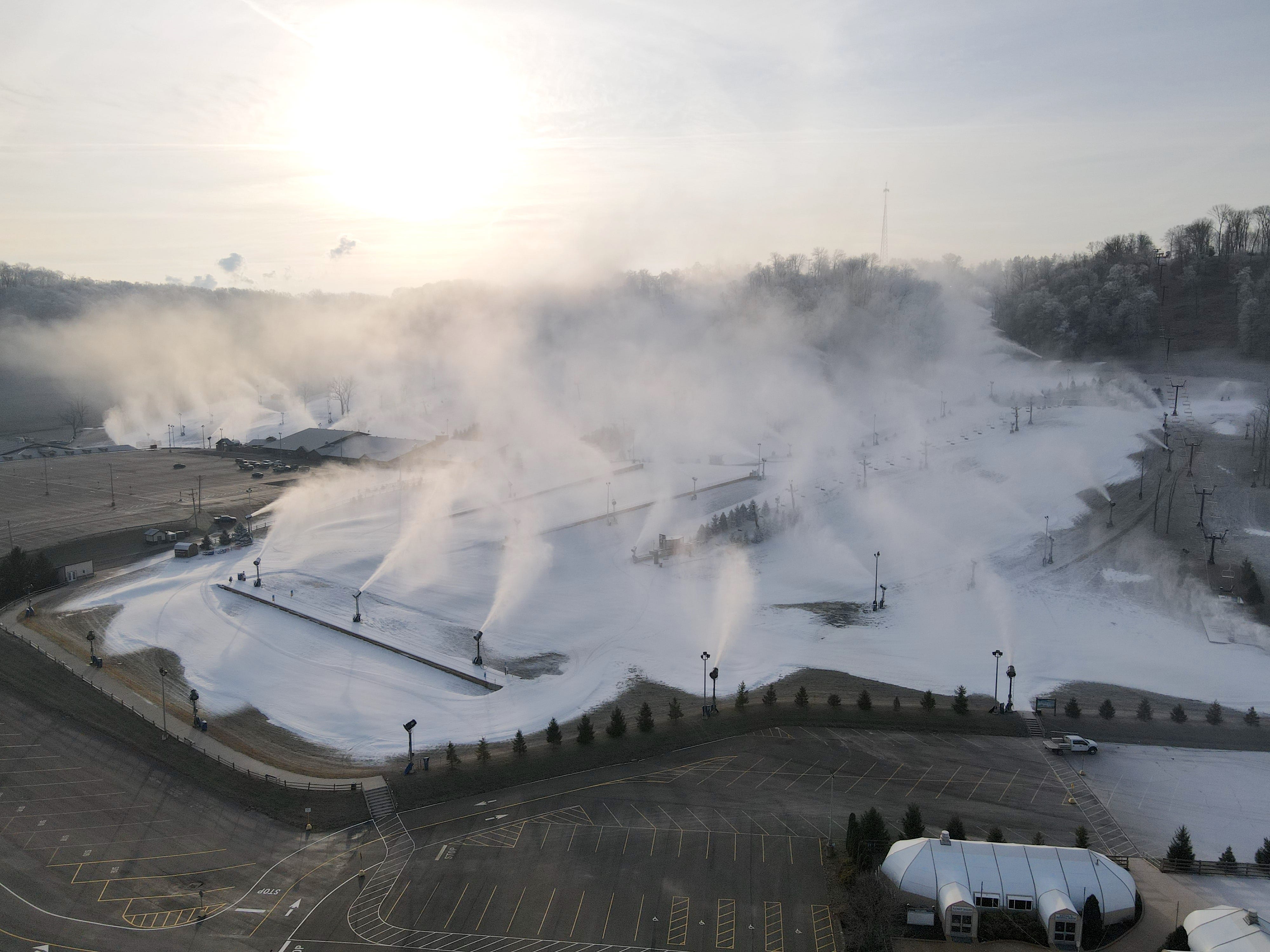


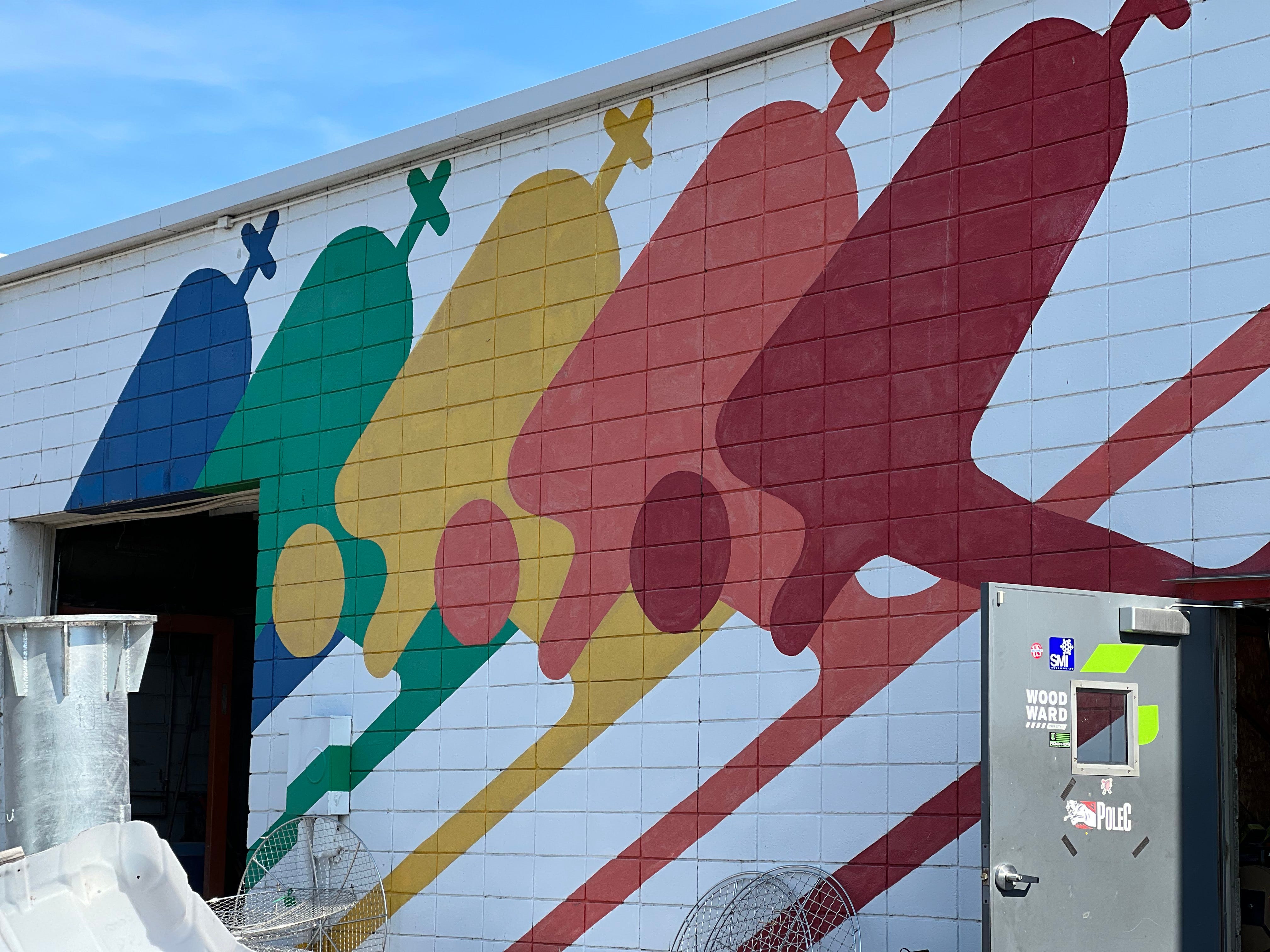



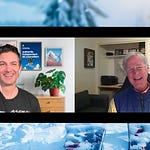


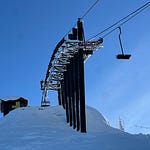


Share this post